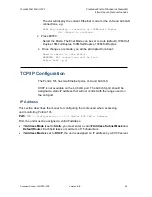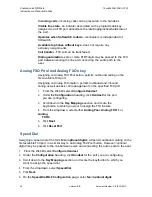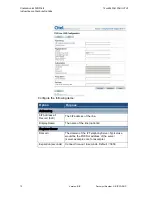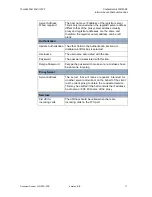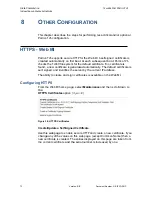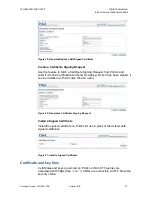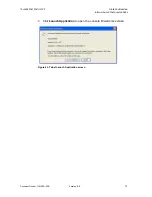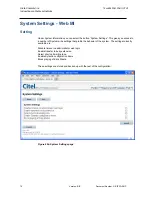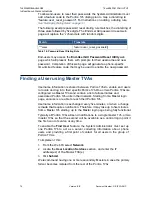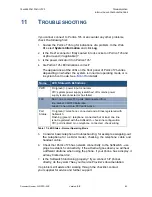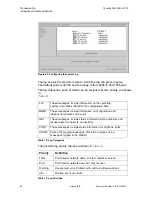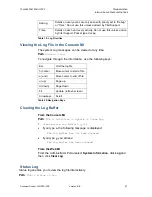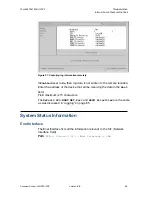
74 Version:
BB
Document Number: G-SIP3D-RUC
O
THER
C
ONFIGURATION
I
NSTALLATION AND
C
ONFIGURATION
G
UIDE
12
AND
24 P
ORT
P
ORTICO
TVA
unit depends on the security of these files, FTP access should be kept
disabled in normal use.
Filename
Contents
/private.pem
Private key – this key should be kept secret. The key is
generated on first boot, if one is not already present.
/request.pem
Most recently generated CSR – this is not secret.
/cert.pem
Current signed certificate – this is not secret.
Table 15: https File System
•
Deleting /cert.pem will cause the unit to regenerate a self-signed
certificate on the next reboot.
•
Deleting /private.pem will cause the unit to regenerate all three files on
the next reboot.
•
If the IP address of the gateway changes after the first boot, then the
certificate will be incorrect (it will refer to the old IP address). Either a new
self-signed certificate should be generated through the Web User
Interface, or (if a programmatic approach is required), the files
/request.pem and / cert.pem should be deleted via FTP. These will be
regenerated upon the next reboot.
Using HTTPS
To use HTTPS, simply type
https
in place of
http
in the address used to
access the Web MI.
Telnet Access - Web MI
Telnet
Telnet
is a standard internet protocol, which you can use to remotely administer
Portico TVA over IP.
1.
Select the
Maintenance
portal.
2.
Scroll down to the Telnet Access heading and click
Telnet
. The External
Protocol Request screen opens.
Some versions of Internet Explorer have Telnet disabled by default. To enable
Telnet in Internet Explorer, refer to Microsoft documentation. Alternately, you can
access the Telnet interface with a suitable Telnet program or a other browser.




